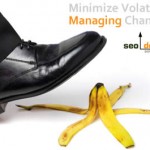Search Engine Optimization (SEO) and Search Engine Marketing (SEM) entail bridging the gap of relevance that connect supply and demand, provider and user or any other type of dualistic cyclical transaction which is co-dependent by design for dynamic sustenance.
When applying this rule to search engines, keywords are the medium that provide context for search engines and searchers alike; and online, context is currency for sales conversion.
For example, as a result of thoughtful planning, a business can create, implement and package a relative product or service and (1) position it as a premium with margins intact (2) identify the most adept user or prospect in need of that product or service and (3) reach a existing or new audience to generate new business all based on the depth of a seed notion.
That seed can also stem or branch out to populate additional spin-off products or services, based on the feedback from the marketplace which can be gauged on the degree of consumer engagement.
Just like it is not uncommon for a company to start off with one core competency and enter a market with a specific initial product or service only to find that their original projections or expectations for demand were overrated and as a result, start offering ancillary products and services to supplement the new directive of extended services.
Much in the same way, diversifying your range of keywords and coupling them with actionable value propositions can yield untold revenues which would have been merely overlooked by someone not as apt to “think outside of the semantic box” when it comes to keyword selection (the basis of any online campaign).
Quantifying intent is the underlying basis that fuels online advertising and marketing; without it, any attempt to convey value would fall on deaf ears. I would rather know why someone is using a search engine more than what they are typing in and trying to convert them after the fact.
By harnessing the psychology behind the click through or the users base level intent, it allows marketers to be more flexible and create a plethora of conversion funnels to entice visitors to convert into customers.
We know that high bounce rates (traffic arriving and abruptly leaving a page) are a contingent of traffic delivered from off-topic keywords or links to a page that are simply too broad to convert.
The remedy in this case is to understand intent and incorporate emotionally charged copy based on benefits to overcome purchasing anxiety or establish the signal or trust that are a precursor
For example, I recently created a post about keyword modifiers which had an impressive array of out of the box modifiers you can use for keyword research to find tons of low hanging fruit and relevant second tier keywords.
Similarly, here is another example of using this logic to develop context with a few base modifiers that someone who is further along the sales cycle might use to find products or services:
– pricing
– rates
– cost
You could potentially derive the following modifiers:
- cost of
- cost for
- best pricing on
- pricing for
- how much for
- price estimate for
- fee for
In addition to using them in “phrase match” you could also used stemmed phrases to discover a broader array of terms with a history of conversion.
We dub phrases such as this “action words” and when coupled with persuasive emotional triggers, the combination is a recipe for a frictionless transaction.
Once they arrive you could sprinkle in keywords like:
Best Price, Discount, Blow Out Deals, Specials, Packages, Special Offer, Act Now and Save, etc… All of which will continue to serve as additional modifiers for long-tail searches (search queries containing three or more words).
By matching the on page SEO with the off page SEO such as meta snippets (which is your window/call to action for first time viewers in search engines), links or promotion (press release, blog posts, xml feeds, rss feeds, etc.). Essentially, with context, you are grooming that page holistically for conversion.
By meeting expectation with a solvent solution, as a result of the process of elimination, it is fair to say that the relevance and context of the modifiers have a higher propensity for setting the stage for a two part or series of mini conversions (taking actionable steps) which ultimately lead up to the crowning achievement or objective.
The example of the keywords was simply one way to create context as well as heighten the relevance for a more specific type of visitor we want to engage our offer (someone ready to purchase).
We know it is about supply and demand, but intention is the definitive fulcrum that decides which visitor is just window shopping of kicking tires or is ready to pull out their credit card and take action.
This one element of keyword research and application can dramatically impact the bottom line. So, you have to ask yourself, do you want more taffic (moving through like a turn-stile) or would you like more conversion (to reinvest into creating more relevant traffic).
Ultimately, the choice all goes back to tactics and relevance where context truly is currency.










Great info.
I like your suggestion of matching on site SEO with offsite SEO. When I ran an SEM campaign for a local photography business in Virginia, I noticed that its competitors did not have any written content on their site about photography deals. I had the manager put one photography special on each of her website’s pages (according to the photography service) and then created ad copy with those keywords and put those keywords into all of our AdGroups’ keyword lists. I saw an increase in traffic within two days and the manager got a few phone calls about the specials. Good stuff!